
Position:Home > News > Application
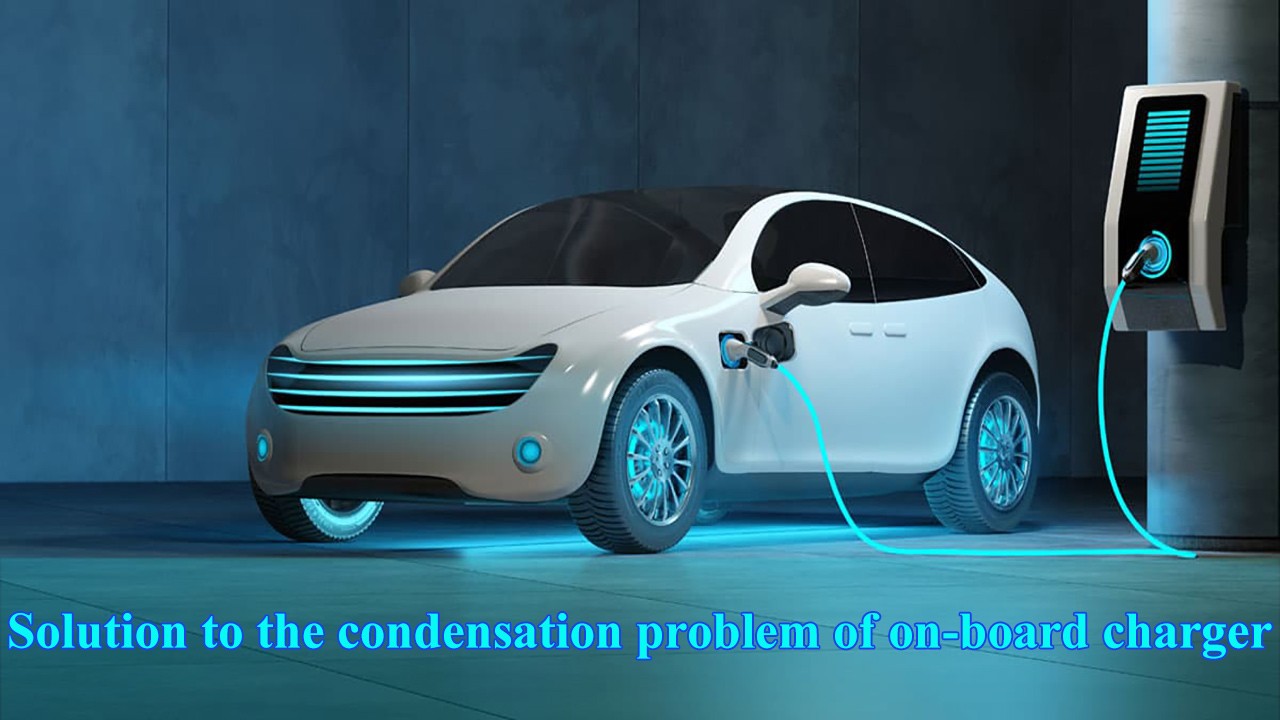
Aiming at the condensation problem of the on-board charger, a quick and effective solution is proposed and the test verification method is refined.
1. Measures to resolve
In the design inspection, except for the signal board, other circuit board modules are protected by three-proof paint, so the solution to the condensation problem of the signal board is mainly considered.
The condensation phenomenon is generated at the PIN pin and PIN pin welding pin of the signal terminal of the car charger, resulting in the risk of short circuit at the adjacent pins.
An effective measure to implement is to dispense glue on the pads of the signal board (see Figure 2) to prevent condensation from affecting product performance and functions.
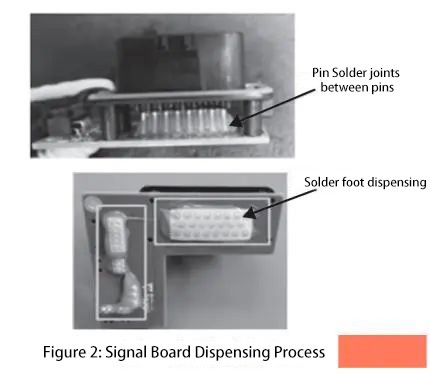
2. Optimization of experimental verification methods
The following is a series of tests specially designed to verify the condensation problem by refining the environmental test method. By carrying out relevant climate load tests, the natural environment conditions and induced environmental conditions to which the product is subjected are simulated.To evaluate the performance and reliability of the product under different environmental conditions during actual use, transportation and storage. Carry out the following tests on the on-board charger after taking the measures to verify the effectiveness of the measures.
2.1 Low temperature working test
The low temperature working test is carried out according to the requirements of 5.1.1 in the standard ISO16750-4:2010. The temperature is set to -40±2℃, and the input voltage is set to the lower limit U2, the rated U1 and the upper limit U3. Under the condition that the output is rated load, it will work for 24h in total, as shown in Figure 3.
The functional status should reach Class A as defined by ISO16750-1:2012
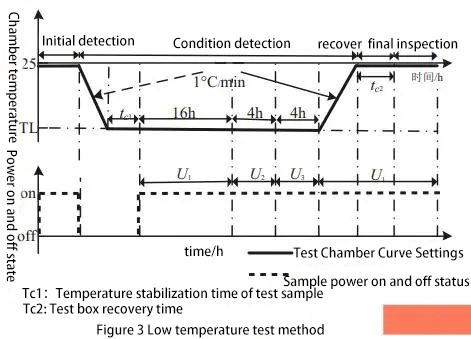
2.2 Temperature/humidity combination test
The combined temperature/humidity test is an accelerated climate test by changing temperature conditions in the presence of high humidity. Causes temperature changes and temperature differences inside and outside the casing of the test sample, and tests the test sample for defects caused by "breathing".
According to the requirements of the standard GB/T2423.34-2012 [4], the test consists of 10 sub-cycles, each 24h. Among them, 5 of the first 9 cycles are suitable for temperature and humidity cycles with low temperature exposure process, and the remaining 4 cycles are suitable for temperature and humidity cycles without low temperature exposure process. During the sub-cycle, when the maximum cycle temperature is reached, the test sample shall be run with electricity.
At the same time, it is required to control the function test in the typical mode. During and after the test, all functions of the test sample must meet the design requirements.
2.3 Condensation test
On the basis of completing the above temperature and humidity cycle test, the test sample needs to be connected to a condensation test. The condensation test is carried out in accordance with the requirements of 5.6.2.4 in the standard ISO16750-4:2010, and the test requirements are further strict. It mainly evaluates the adaptability of the test samples under the condensation workload, and defines the temperature and humidity curves to approximate the effect of condensation generated by the actual operation of the vehicle environment.
The condensation test cycle is shown in Figure 4, and 5 test cycles are carried out. During the test, the test sample should work according to the working mode 2.1 specified in ISO16750-1:2012.After the test, the functional state of the test sample shall conform to the Class B defined by ISO16750-1.
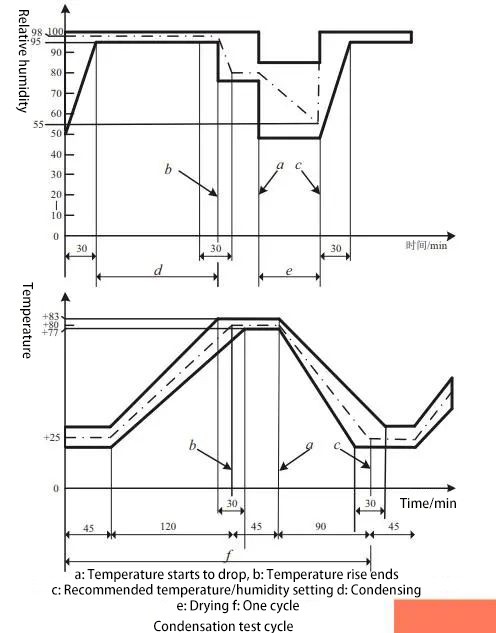
Test according to the following working conditions, rated input conditions, full load output, ambient temperature 70 ℃, water temperature 65 ℃, continuous operation 1000h. The functional status shall reach Class A as defined by ISO16750-1:2012.
According to the above test requirements, four vehicle-mounted chargers that have been dispensed with signal boards were tested. The test results meet the requirements, there is no functional abnormality caused by condensation, and all the functions of the test samples meet the requirements.
After the implementation of the solution described in this article, the product functions are normal, and the failure does not occur again.
3. Manufacturer recommended
The car is used in a harsh environment. When condensation occurs inside the car's electronic products, it may cause the circuit board to be damp, deformed and disconnected, and water and electricity leakage. Causes the dielectric strength to drop, the internal signal is short-circuited, and causes the dominant or recessive circuit failure.
The reliability of automotive electronic products is directly related to the safety and reliability of the vehicle. In the design stage, the design scheme should fully consider the uniform heat dissipation.
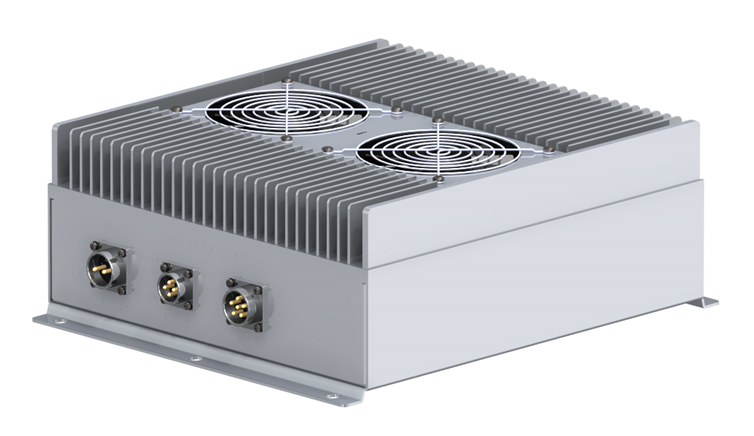
Three-proof treatment (anti-moisture, anti-mildew, anti-salt spray) should be carried out on the circuit boards, connectors and other circuits inside the product to avoid the effect of condensation on the product.
In the product verification test stage, it is necessary to comprehensively consider the working conditions of the product, and strictly carry out relevant tests with condensation to verify the environmental adaptation.
In order to meet the reliability of OBC products of on-board chargers, Dilong New Energy Technology Hebei Co., Ltd. is deeply engaged in R&D and innovation.
The on-board charger products with high efficiency, high power density, high reliability and high stability have been developed and produced, and mass production has been achieved.
Dilong New Energy OBC products are integrated with potting, which enhances the performance of anti-corrosion, moisture-proof, shock-proof and anti-condensation. The waterproof and dustproof grade is IP67, which meets the requirements of military standards. Dilong New Energy is a high-tech enterprise focusing on the R&D, production and sales of OBC on-board chargers, on-board DC/DC converters, and on-board power supply integrated products.
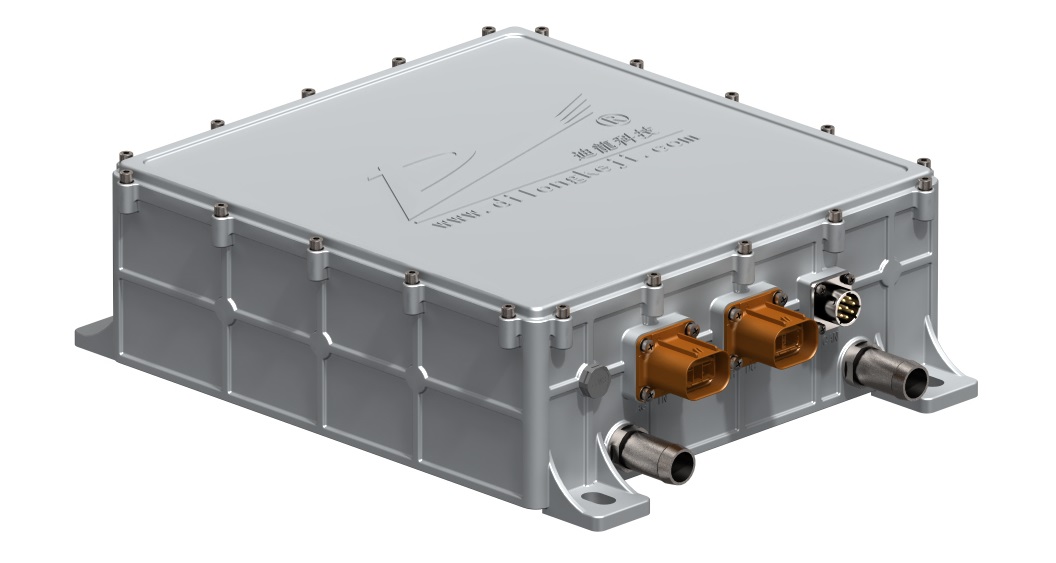
Invested in and built a standardized professional factory certified by the automotive-grade IATF16949 system, with fully automated mounting and welding processes, fully automated testing, aging and other processes. In the production process, the company strictly selects vehicle-grade components, and adopts the international advanced full-digital LLC resonant frequency modulation technology, so that the full-load efficiency of the on-board charger OBC products reaches 95%.
It has core advantages such as high power density, reliable operation, small size, light weight, high safety, long life, easy installation, etc., and is well recognized by domestic and foreign customers. Among the domestic car charger manufacturers, Dilong New Energy took the lead in completing the ISO9001 certification of the quality management system, the IATF16949 certification, and the EU CE product certification.